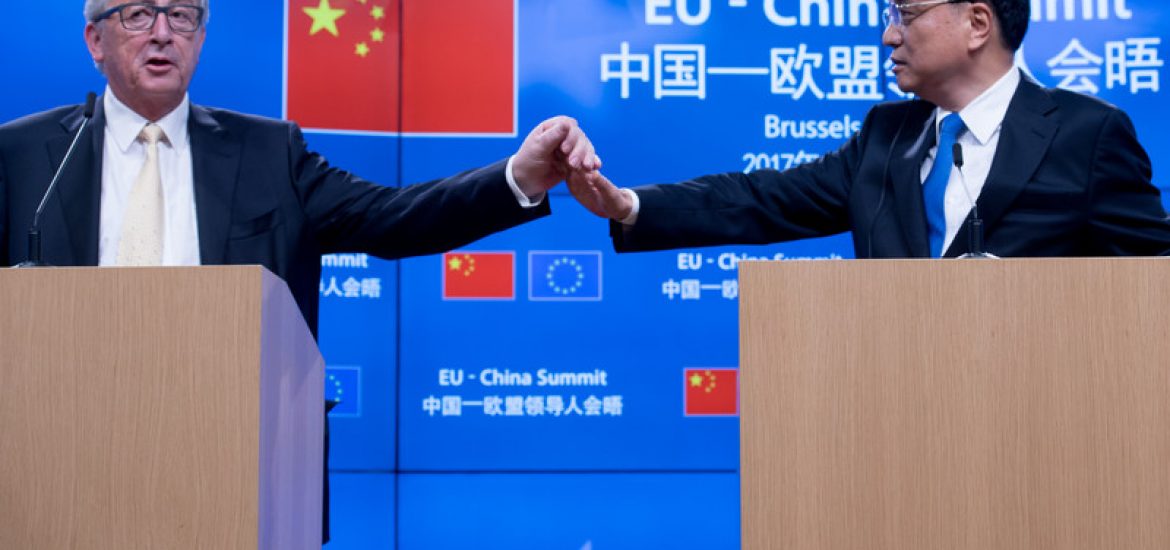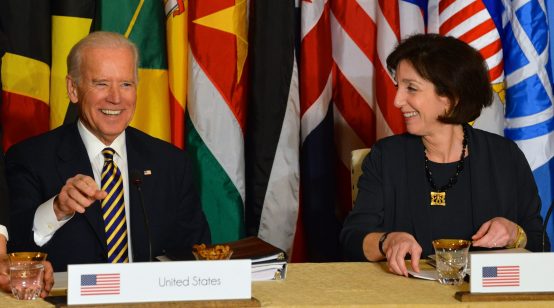
The meeting between Russian President Vladimir Putin and U.S. President Donald Trump on Monday stole all the headlines this week. It was dramatic and exciting, the mutual swoon of two young lovers or the emotional manipulation of a controlling ego, depending on your viewpoint. It was also the meeting of the global titans of oil. OPEC is not entirely fangless, but only collaboration with Russia or the United States gives the organization any heft.
On the same day, however, the global titans of clean energy – China and the European Union – also met in Beijing for the 20th EU-China Summit. Aligned by similar interests and complementary assets in energy, China and the EU are seizing the moment to fill a global leadership vacuum in shepherding the energy transition. The EU was the first to demonstrate the will to leave fossil fuels, but China’s will might now exceed the EU’s, as it continues its rise as a global power. China certainly brings enormous capital to bear to enable both sides to lead the world in clean-energy technology.
The joint communiqué from this week’s meeting included an annex with a statement on climate change and clean energy, which signals once again the two sides are very much on the same page. Points of contention and competition keep the China-EU relationship in the courtship stage. It is time, however, for them to move beyond mere communiqués, good intentions, and complementary assets to consummate their union through aggressive clean-energy policies.
A longstanding attraction
China-EU energy partnership is nothing new. The two sides have sought cooperation on energy as far back as 1981, after having suffered two successive oil-price spikes in the 1970s. From 1994-2011, during China’s economic ascent and the EU’s final formation, energy became a mainstay in bilateral relations, and the two sides launched cooperative institutions and initiatives. At the 2012 summit, the partnership reached new heights with the first EU-China High Level Energy Meeting.
China and the EU bring a unique set of common interests to bear in clean energy. Both have become champions of wind, solar, nuclear, and hydropower technologies. Each depends on imports of hydrocarbons for its energy security and wants to mitigate the environmental damage of fossil fuels. Finding cleaner, more sustainable energy sources will enhance each side’s energy security. Finally, both are massive consumer markets in which clean energies can grow.
The most poignant China-EU divergence is in each side’s ability to finance new investments. China brings an unparalleled ability to do so, whereas the EU has struggled since the global financial crisis to solidify its economy. It has therefore been forced to shift back to coal in some countries in certain periods out of economic necessity. Pushing through the energy transition, however, requires the requisite energy security to enable investments in new fields, something neither China nor the EU has realized.
Keeping at arm’s length
Over the long arc, then, China-EU cooperation on energy and other issues has continued to deepen since 2012. Yet the relationship still leaves much to be desired. Trade is the thorniest issue, as the EU has run a now €176 billion deficit with China. The EU slapped tariffs on Chinese solar panels in September 2017, which Trump matched in January 2018.
Distrust clearly undermines the relationship. The EU fears that a more economically powerful China would come to dominate its domestic industries. In attempting to rid itself of energy insecurity in fossil fuels, it could create another in renewables. China has fewer reservations about the partnership and seeks to expand its markets and investments in Europe. Earlier this month, it pressed Europe for an anti-U.S. alliance in trade, in an attempt to seize the moment of Trump’s global trade wars and antagonism of Europe. Nothing concrete came from it, thus far.
The annex on climate change and clean energy included China-EU pledges to “strengthen bilateral cooperation” in low greenhouse gas emission development strategies, emission trading, energy efficiency, clean energy, low-emission transport, low-carbon cities, climate-related technology, investment, and developing countries.
Of these categories, we should watch emissions trading most closely. It is the most challenging to implement and is the newest focus of collaboration. The European Commission and China held their first policy dialogue on the topic in April 2018. The majority of energy economists and analysts believe that the only way to encourage renewables more is to put a price on carbon through an emissions-trading scheme. A united China-EU front in this area would create a common vision for future energy markets. It would also account for the environmental and social costs of using fossil fuels, while not compromising either side’s trading and energy relationships with others countries.
Paris winter
China-EU relations have reflected the global community’s attempts to address climate change. The first international conference on the issue was in 1972 in Stockholm. But serious progress did not occur until the 1992 United Nations Conference on Environment and Development (UNCED) in Rio. This conference had the surprising support of then U.S. President George H. W. Bush and later Bill Clinton and resulted in the 1997 Kyoto Protocol. But George W. Bush announced in the first months of his presidency that the United States would not participate. Momentum restarted at the 2009 Copenhagen conference and culminated in the 2015 Paris COP-21 agreement, all under Obama. Trump, another Republican and climate change-denier then withdrew from Paris and abnegated U.S. leadership on the issue of climate change.
What have we learned from the last three decades? The world should not wait for U.S. leadership on climate change. The EU has long understood this reality, but perhaps China has only recently. After U.S. President Barack Obama and Chinese President Xi Jinping met in 2014 and offered a green energy partnership that set the foundations for Paris. Trump’s election undid that momentum, a reality of dealing with democratic politics in Western countries.
China-EU Courtship
The EU is plagued by similar constraints of democratic politics and rising nationalism. It will be difficult for EU leaders to forge a real bond with China amidst these forces. Still, China and the EU are linked arm-in-arm on energy. The International Energy Agency’s Clean Energy Transitions Programme was launched in November 2017 to aid this partnership, to a large extent.
If Russia and the United States are college students in the midst of an unpredictable oil dalliance, China and the EU are a staid young couple undecided about getting married in clean energy. They have fears about marriage and distrust the other, but also can’t leave each other. Their slow dance will continue long into the night until they finally decide to get serious.





